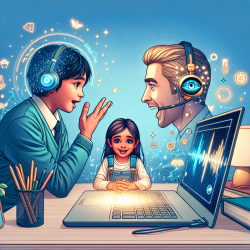The Alarming Connection Between Bullying and Self-Harm
Recent research has shed light on a troubling correlation between bullying victimization and self-harm in early adolescence. As a practitioner dedicated to fostering positive outcomes for children, understanding these findings is crucial. The study titled "Bullying victimisation and risk of self harm in early adolescence: longitudinal cohort study" provides valuable insights that can guide interventions and support for at-risk youth.
Key Findings from the Study
The study followed a cohort of 2232 children in the UK, assessing them at ages 5, 7, 10, and 12. It found that children who were frequently bullied were at a significantly higher risk of self-harming by age 12. Specifically, more than half of the children who self-harmed had been victims of frequent bullying. This was consistent even after accounting for other factors such as pre-existing emotional and behavioral issues, low IQ, and family environmental risks.
Implications for Practitioners
These findings highlight the importance of early intervention and targeted support for children who experience bullying. As practitioners, it is essential to:
- Identify children who are frequently bullied and assess their risk factors for self-harm.
- Develop coping strategies and interventions that address the emotional distress caused by bullying.
- Collaborate with schools, parents, and other professionals to create a supportive environment for at-risk children.
Implementing Data-Driven Interventions
Data-driven decisions are crucial in tailoring interventions that effectively address the needs of bullied children. Practitioners should consider the following strategies:
- Risk Assessment: Regularly assess children for signs of bullying and self-harm, especially those with a family history of suicide, mental health issues, or maltreatment.
- Interdisciplinary Collaboration: Work with educators, mental health professionals, and families to develop comprehensive support plans.
- Evidence-Based Programs: Implement programs that have been shown to reduce bullying and improve coping mechanisms in children.
Encouraging Further Research
While this study provides significant insights, it also underscores the need for further research to explore the nuances of bullying and self-harm. Practitioners are encouraged to stay informed about new findings and integrate them into their practice.
Conclusion
The link between bullying and self-harm is a call to action for practitioners working with children. By understanding the data and implementing targeted interventions, we can help mitigate the risks and promote healthier outcomes for young adolescents.
To read the original research paper, please follow this link: Bullying victimisation and risk of self harm in early adolescence: longitudinal cohort study.










